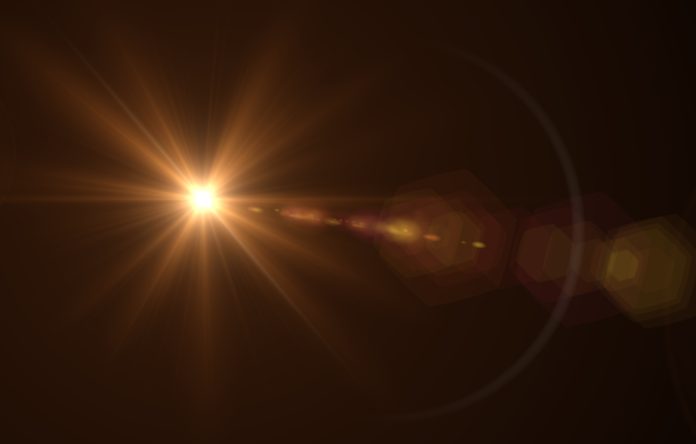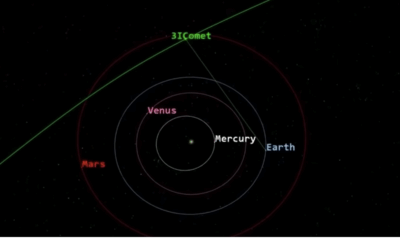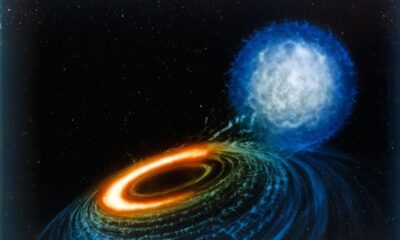Science
Astronomers Uncover Young Planet WISPIT 2b Around Sun-Like Star

International astronomers have announced the discovery of a young planet, named WISPIT 2b, forming around a star similar to our Sun. This planet, estimated to be just 5 million years old, is likely a gas giant comparable in size to Jupiter. The finding offers significant insights into the early stages of planetary formation and could alter our understanding of how solar systems develop, including our own.
Details of the Discovery
Researchers from Leiden University, the University of Galway, and the University of Arizona made this groundbreaking discovery, which has been detailed in the Astrophysical Journal Letters. They utilized the Very Large Telescope (VLT) located in the Atacama Desert in Chile. Initially, the team aimed to conduct quick observations of young stars to identify potential planets. Instead of a simple point of light, they encountered a complex, multi-ringed dust disk surrounding WISPIT 2, prompting a deeper investigation.
Follow-up observations confirmed the existence of WISPIT 2b, which was found nestled within a gap in the disk. This marks only the second known instance of a planet at such an early formation stage around a Sun-like star. Notably, it represents the first precise detection of a planet within a multi-ringed disk, elevating WISPIT 2b to a key subject for ongoing and future planetary science studies.
Observations and Implications
The planet was observed in near-infrared light, revealing that it continues to glow and is still hot from its recent formation. In a parallel effort, a separate team at the University of Arizona detected the planet using visible light with a specially designed instrument, confirming that WISPIT 2b is actively accreting gas, an indication that it is still forming its atmosphere.
The host disk of WISPIT 2b is enormous, extending to a radius of 380 astronomical units (AU). Such disks of dust and gas are recognized as the birthplaces of planets, often displaying visually striking characteristics like rings and spiral arms. The structure surrounding WISPIT 2 is believed to have been influenced by the nascent planet within it.
The discovery of WISPIT 2b provides astronomers with an exceptional natural laboratory to explore how young planets interact with their surrounding disks and evolve over time. By studying systems like this one, researchers aim to gain insights into the diverse configurations of exoplanet systems and understand why many differ so significantly from our solar system.
This finding emerged from a five-year observational project designed to investigate whether gas giant planets on wide orbits are more prevalent around young or older stars. Although the primary goal was different, the unexpected identification of WISPIT 2b marks a pivotal milestone in the field of planetary research.
-

 Entertainment2 months ago
Entertainment2 months agoAnn Ming Reflects on ITV’s ‘I Fought the Law’ Drama
-

 Entertainment3 months ago
Entertainment3 months agoKate Garraway Sells £2 Million Home Amid Financial Struggles
-

 Health2 months ago
Health2 months agoKatie Price Faces New Health Concerns After Cancer Symptoms Resurface
-

 Entertainment2 months ago
Entertainment2 months agoCoronation Street’s Carl Webster Faces Trouble with New Affairs
-

 Entertainment2 months ago
Entertainment2 months agoWhere is Tinder Swindler Simon Leviev? Latest Updates Revealed
-

 Entertainment3 months ago
Entertainment3 months agoKim Cattrall Posts Cryptic Message After HBO’s Sequel Cancellation
-

 Entertainment2 months ago
Entertainment2 months agoOlivia Attwood Opens Up About Fallout with Former Best Friend
-

 Entertainment2 months ago
Entertainment2 months agoMasterChef Faces Turmoil as Tom Kerridge Withdraws from Hosting Role
-

 Entertainment3 months ago
Entertainment3 months agoMarkiplier Addresses AI Controversy During Livestream Response
-

 Entertainment4 months ago
Entertainment4 months agoSpeculation Surrounds Home and Away as Cast Departures Mount
-

 World2 months ago
World2 months agoCole Palmer’s Mysterious Message to Kobbie Mainoo Sparks Speculation
-

 Entertainment2 months ago
Entertainment2 months agoITV’s I Fought the Law: Unraveling the True Story Behind the Drama




















